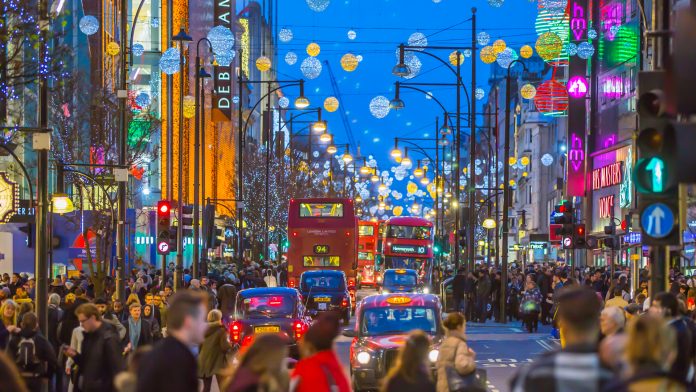The transmission of COVID-19 could be diminished by the utilisation of a novel generation of smart lampposts.
In a new report commissioned by city transformation experts UrbanDNA, Itron, Lucy Zodion, Hydro, signify, and the Smart City Infrastructure Fund – proposals have been made to implement ingenious smart lampposts proficient in reading body temperature and recognising over density of crowds.
Such technology could be exceptionally beneficial in curbing the propagation of the deadly virus; equipped with sensors that can analyse body temperature and overcrowding, these innovative beacons of light could become a beacon of hope in tackling the genesis of spreading COVID-19 – the proximity of the population.
Additional functions of these smart lampposts incorporate CCTV, flooding monitors, air quality sensors, digital signage, and 5G Wi-Fi hotspots; evidently, this new technology provides benefits that stretch far and beyond primarily tackling the coronavirus pandemic.
The conglomerate of urban transformation experts drew inspiration from recent examples of smart lamppost technology when devising their plans, with similar methods implemented in Barcelona, Copenhagen, LA, London, Munich, and Singapore.
In the Las Ramblas area of Barcelona, the City Council utilised a camera-based solution embedded in lampposts to monitor public health at beaches and counteract overcrowding throughout the coronavirus pandemic.
Marc Perez-Batlle, Innovation Manager at Municipal Institute of Information and Technology at Barcelona City Council, said: “We used scanning devices to get the images and a bit of artificial intelligence to analyse them to find out what portion of the beach was free in terms of lack of people.
“We analysed the proportion of sand rather than identifying people’s faces. This enabled us to look at the capacity that was free. Due to privacy concerns, we anonymised the images.”
In London, the Westminster City Council develops strategies that use lighting to disperse crowds from densely populated tube stations around Oxford Street. A London street lighting expert said: “It’s simply about putting lights on the ground to either make people stand there or make people avoid it. This helps with crowd control when you are coming out of the train and out of tube stops to help curtail people mingling around exits.”
Perhaps the location where these technologies are most advanced is Los Angeles, boasting over 400 smart street lights that facilitate electronic vehicle chargers, with plans to pilot air quality sensors, fire spotters, gunshot locators and earthquake sensors. Although not currently used in the fight against COVID-19, the detection of high temperatures in the population could be achieved by temperature sensors mounted in the smart lampposts.
James Quigley, Senior Engineering Manager at Bureau of Street Lighting (BSL) Los Angeles, said: “Are people congregating where they shouldn’t be and how many of these people are exhibiting symptoms? A temperature sensor that is mounted on a lamppost is something that could be easily done. If your temperature is above 100, you can flag it up.”
Worldwide there are around 326 million streetlights, a quarter of which run on energy-saving LED’s, with 10 million lamp columns already set up as smart lampposts. With Europe estimated to be losing over €2 billion per day during the coronavirus pandemic, this same loss could purchase 2 million smart lampposts per day, demonstrating the incredible economic potential of the technology.
Richard Perry, Lucy Zodion’s Smart Cities Head of Business Development, said: “The pandemic has been highly revealing regarding smart city infrastructure, and the need to improve our way of working to drive further efficiencies. The key takeaway from the report is the amount of untapped potential that exists.
“We have seen forward-thinking cities such as London, Barcelona, and Copenhagen leading the way, and individually they are only accessing a small proportion of what the ‘humble lamppost’ can offer. Imagine the potential for other cities. With this new alliance, we are learning all the time and discovering new initiatives in which the lamppost can play a role in our recovery.
“We don’t know when we will be finally COVID-free, but as we slowly ease restrictions, new measures will be needed to keep everyone and the economy safe. By using their existing infrastructure, local authorities can smarten their lighting assets making their public spaces safer, healthier and bag the bankable financial savings that result from smart lighting upgrades – which typically exceed 50%.”
Graham Colclough, the founding partner of UrbanDNA, said: “The paper highlights the progressive cities that are leading the way in using smart technologies to tackle COVID. It highlights a second group that have implemented the technology.
“However, they have not yet fully exploited its potential to address COVID recovery. The real opportunity lies with the third larger group that can reap huge energy and cost savings from installing LED smart lights and benefit at the same time by making those lights’ smart’ to address COVID-related needs. Our report shows how they can do so to best effect.”









